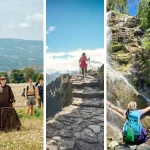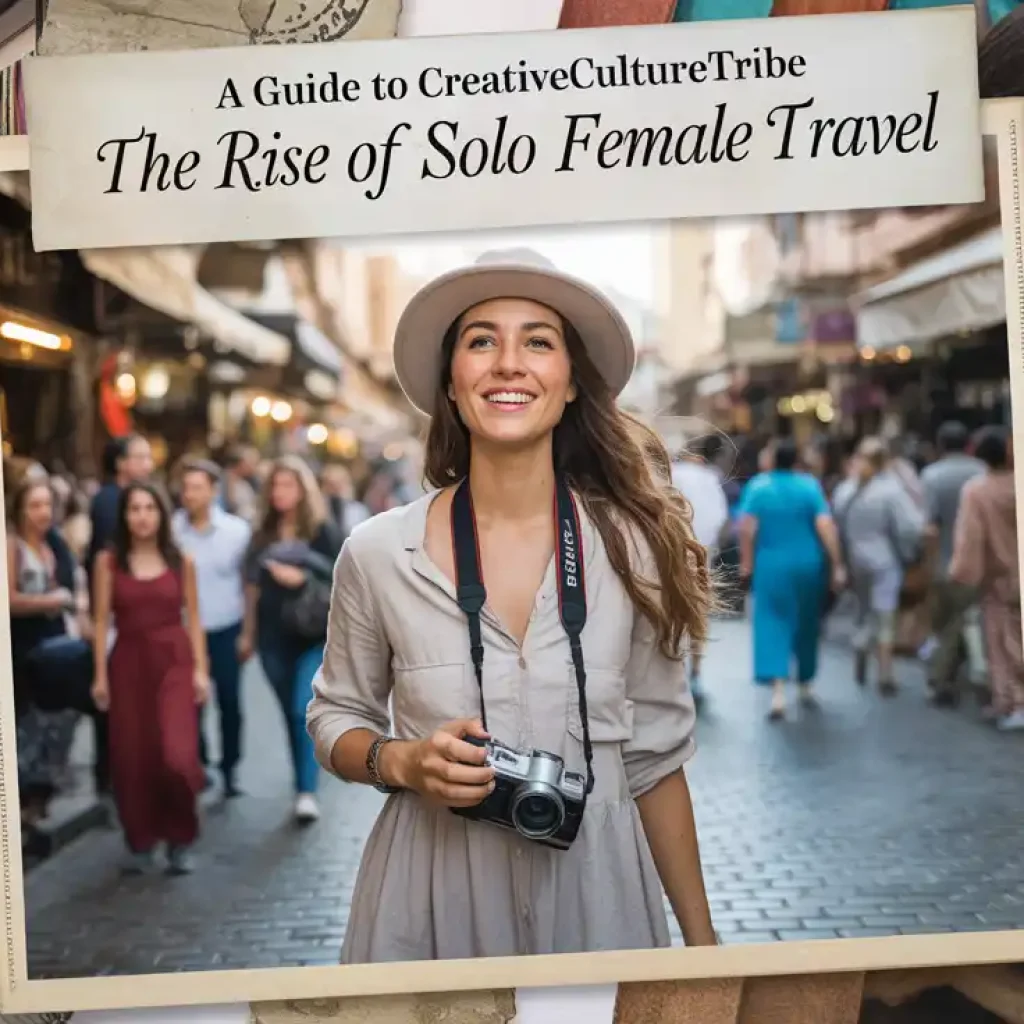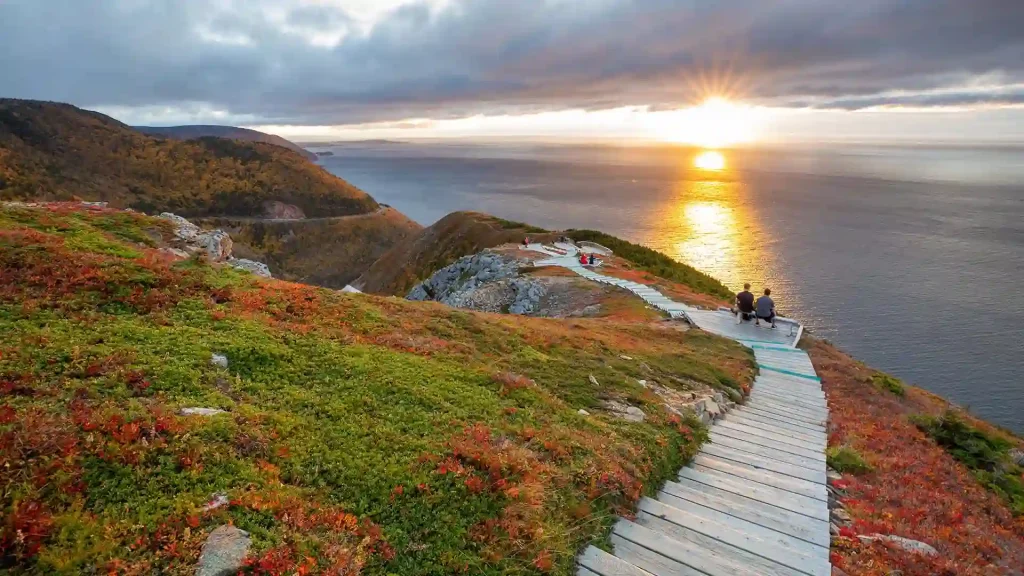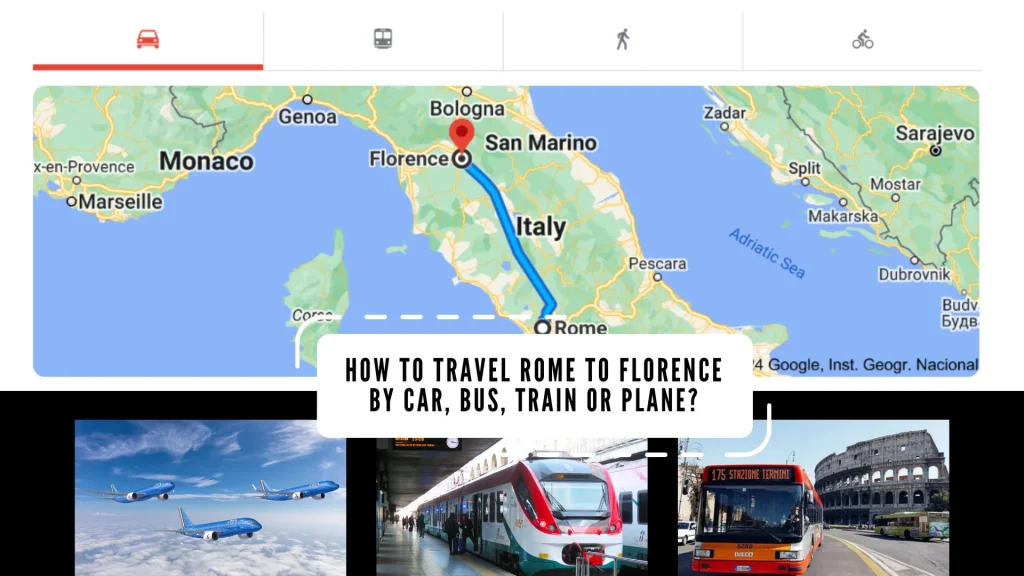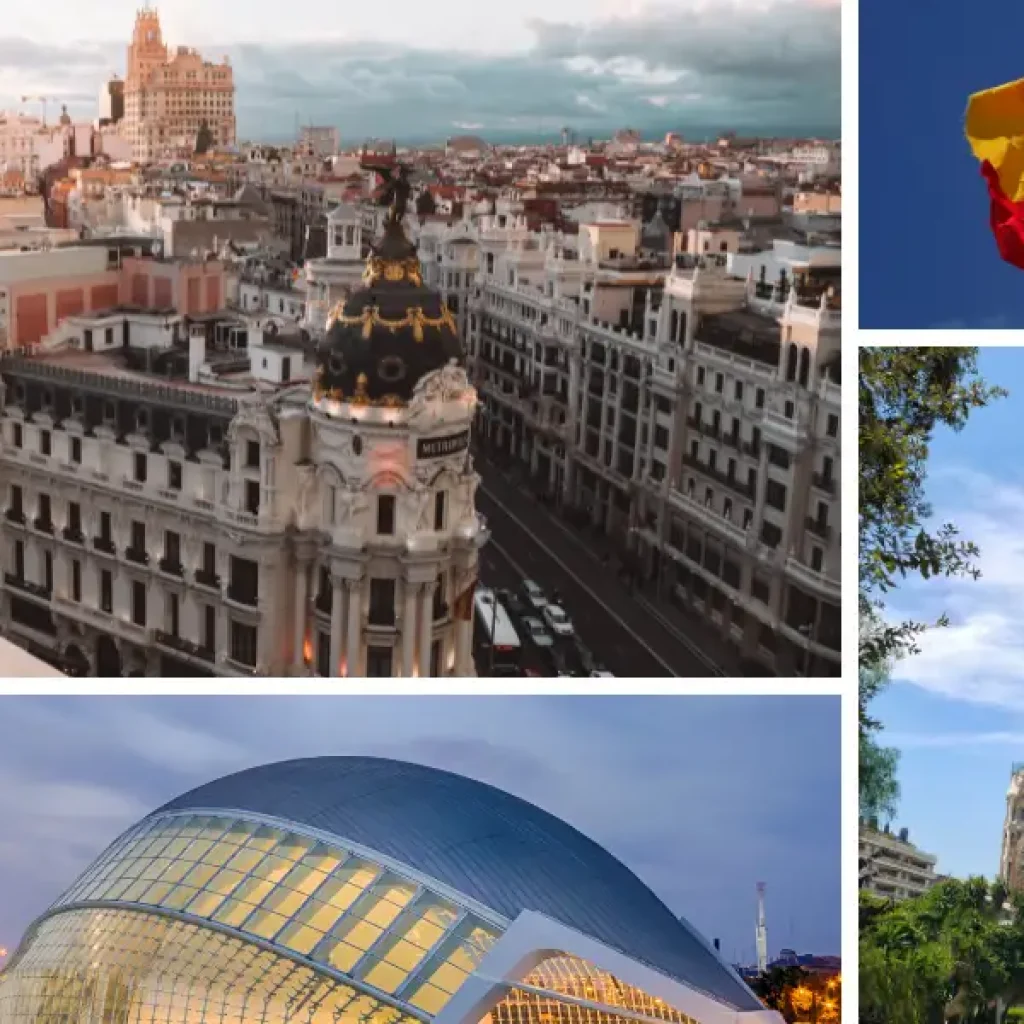10 Oldest Cities in Italy with Ruins You Can Visit Today
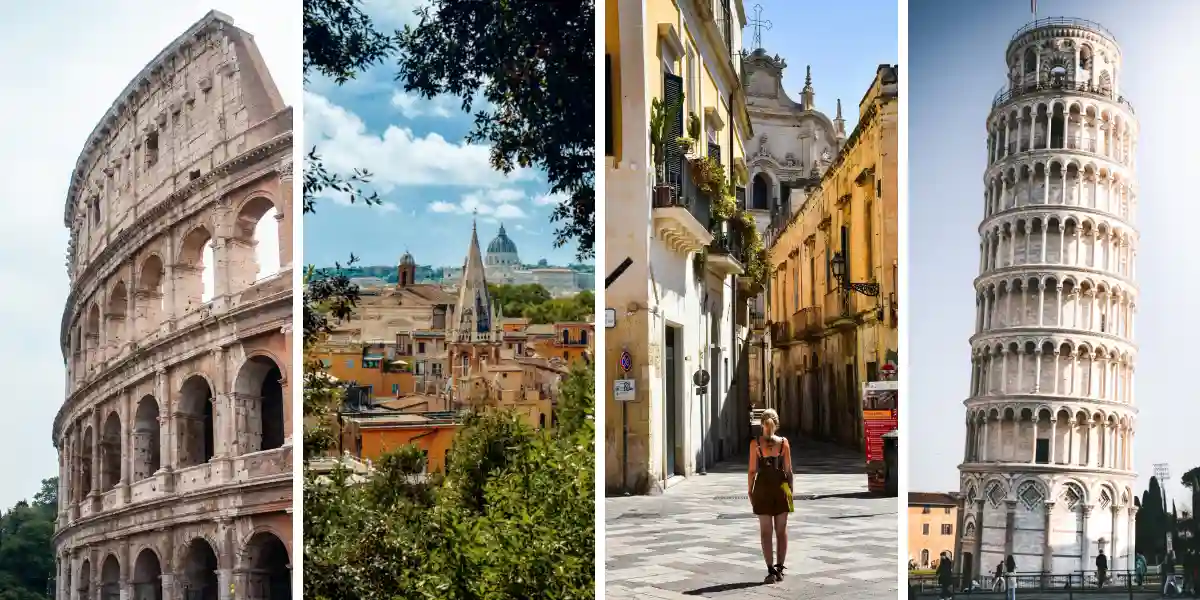
When most travelers think of ancient Italy, their minds jump straight to Rome. But the truth is, the country’s past goes much deeper. Some of the 10 oldest cities in Italy were already thriving long before the Roman Empire rose to power, with traces of Greek colonies, Etruscan cities, and even cave dwellings still visible today.
In this guide, I’ll walk you through not just names and dates but also the ruins you can actually explore. You’ll see how criteria like continuous habitation, archaeological depth, and accessibility shaped this list. Whether you’re plotting a grand road trip or just adding a side stop, these cities offer both timeless ruins and authentic present-day life.
How We Ranked “Oldest” (Read This First)?
Defining “oldest” isn’t as simple as picking the city with the earliest mention in Greek myths or inscriptions. We used four main criteria:
- Founding date (F): earliest settlement or mention in historical evidence
- Continuity of habitation (C): whether the area shows continuous habitation through multiple eras
- Ruins you can still see (R): temples, streets, or walls accessible to visitors
- Traveler access (A): ease of reaching the city and exploring without special permits
This model helps balance academic precision with real travel value. For example, places like Pompeii score high on ruins but low on continuity—it’s a site, not a living city.
By contrast, the historic cities in this list blend age claims with modern culture, giving you both a walk through history and a functioning Italian city to enjoy today.
1. Matera (Basilicata) — Prehistoric Cave City Turned Living Museum
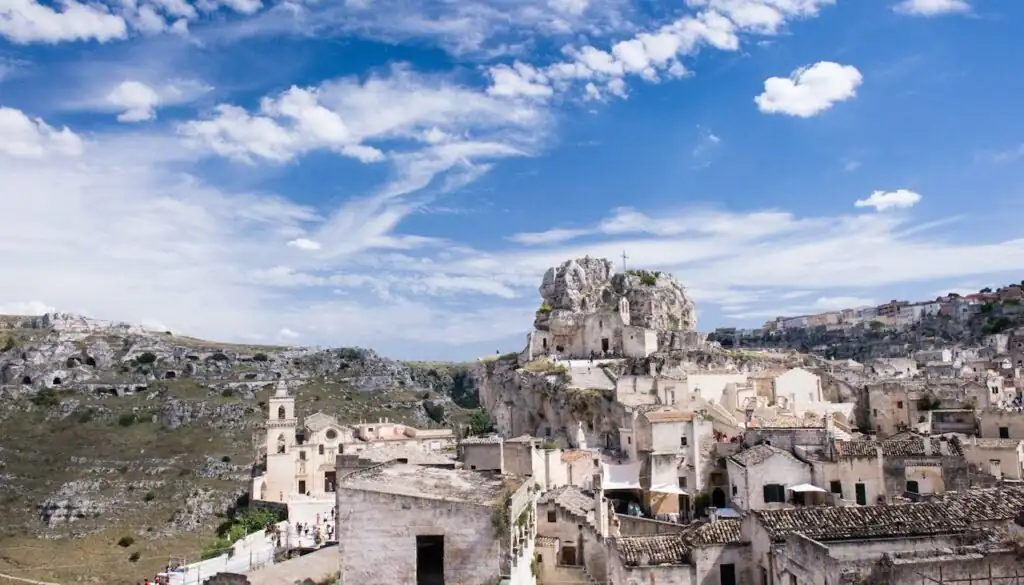
Matera is often described as the oldest city in Italy, and for good reason. Its Paleolithic era origins, carved into limestone ravines, make it one of Europe’s most extraordinary places of continuous habitation. The urban structure here feels otherworldly—houses, churches, and entire neighborhoods tunneled into rock.
Matera’s unique cave systems, known as the Sassi districts, represent one of the earliest examples of organized inhabited cities. Archaeological evidence suggests the area was home to settlements long before the rise of the Mycenaean civilization.
What to see now
- Casa Grotta di Vico Solitario: a furnished cave home that shows what daily life looked like before modern upgrades
- Chiesa San Pietro Caveoso: perched dramatically over the ravine
- Cattedrale di Matera and its Romanesque style, contrasting beautifully with the stone-cut homes
- Parco Regionale della Murgia Materana: hiking trails with panoramic views of rock churches carved into cliffs
- MUSMA Contemporary Art Museum: a modern layer hidden inside the caves
For accommodations, check out Palazzo Gattini for luxury or Masseria Fontana Di Vite for countryside charm. Many travelers split their time between old Matera and rural stays just outside the ravine.
How long to stay
You can see highlights in a day, but two days allow you to explore more deeply, especially guided tours that combine history with panoramic hikes.
2. Syracuse / Siracusa (Sicily) — 8th-Century BCE Greek Powerhouse
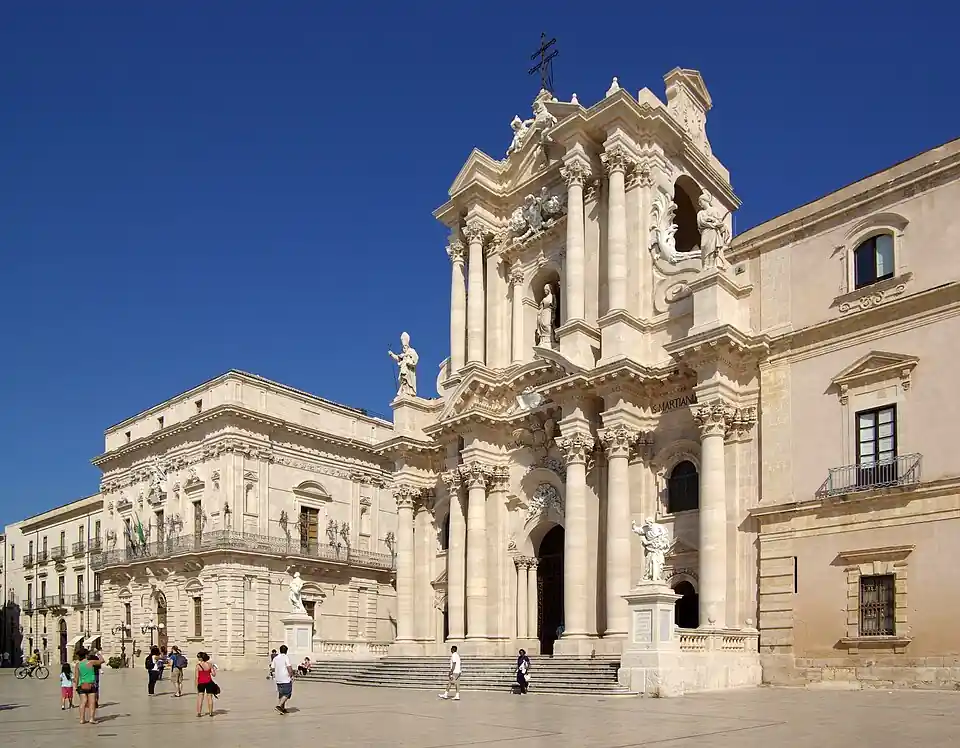
Founded by Greek city-states from Corinth in the 8th century BCE, Syracuse was once one of the most powerful Greek colonies in the Mediterranean. It later came under Roman control, but its roots in Greek culture still shine through its ruins.
Syracuse flourished during the Byzantine era, surviving conquests and changes while keeping its historic fabric intact. It’s also famously connected to the Greek mathematician Archimedes, who lived and worked here during the city’s peak.
What to see now
- Neapolis Archaeological Park with its Ancient Roman Theatre and the Greek theater
- The Ear of Dionysius, a limestone cave with legendary acoustics
- Ortigia Island, home to the Temple of Apollo and a cathedral built over ancient foundations
- Walking tours with expert guides — the best way to connect layers of historical evidence
Allow at least a full day. Two days give time to enjoy Ortigia’s sunsets, markets, and modern culture alongside its ruins.
3. Cumae (Campania) — Greek Gateway to Italy
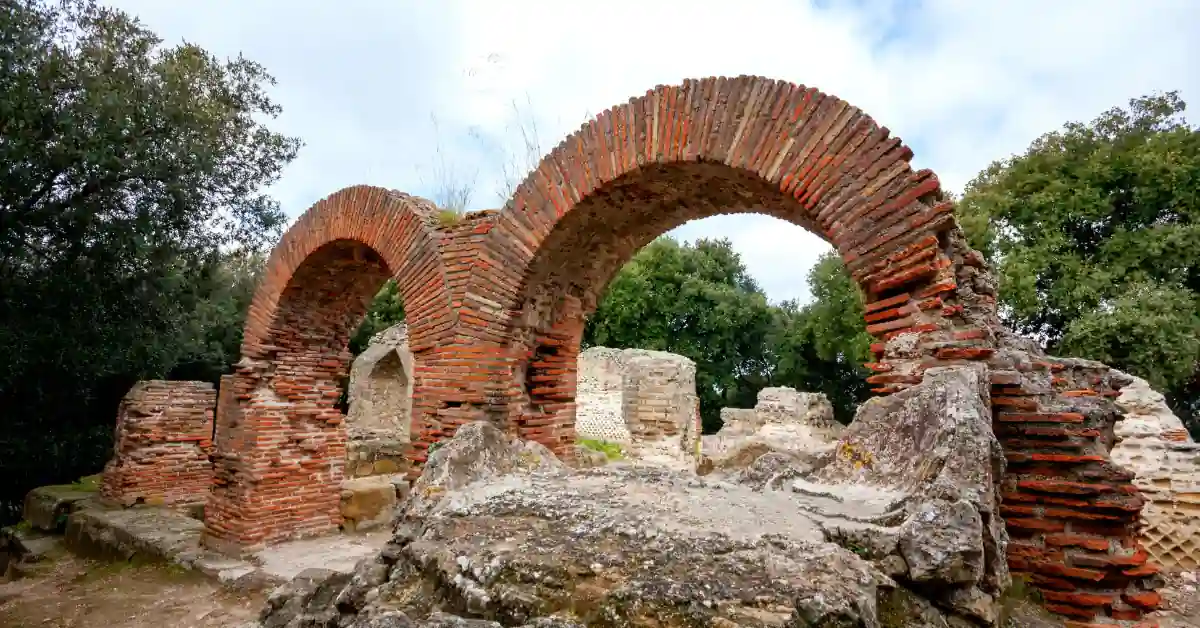
Cumae is often overshadowed by Naples, but it holds a special place as one of the earliest Greek colonies on the Italian mainland. Founded in the 8th century BCE, it was the first stepping stone for magna graecia and played a role in spreading Greek myths and rituals to Italy.
This city’s ruins include the legendary Cave of the Sibyl, linked to prophecy, and temple remains overlooking the sea. Cumae shows a clear time period shift as it moved from Greek to Roman control, offering visitors a layered story.
What to see now
- The Acropolis with Temple of Apollo foundations
- The Cave of the Sibyl, atmospheric and steeped in mythology
- An archaeological excavations site that uncovers early settlement traces
- Combine with nearby Baiae or Pozzuoli for a day immersed in historic cities of Campania
Cumae works well as a half-day trip from Naples. Go with guided tours if you want the myths and archaeology explained in detail.
4. Naples / Neapolis (Campania) — Ancient City Beneath the Modern Metropolis
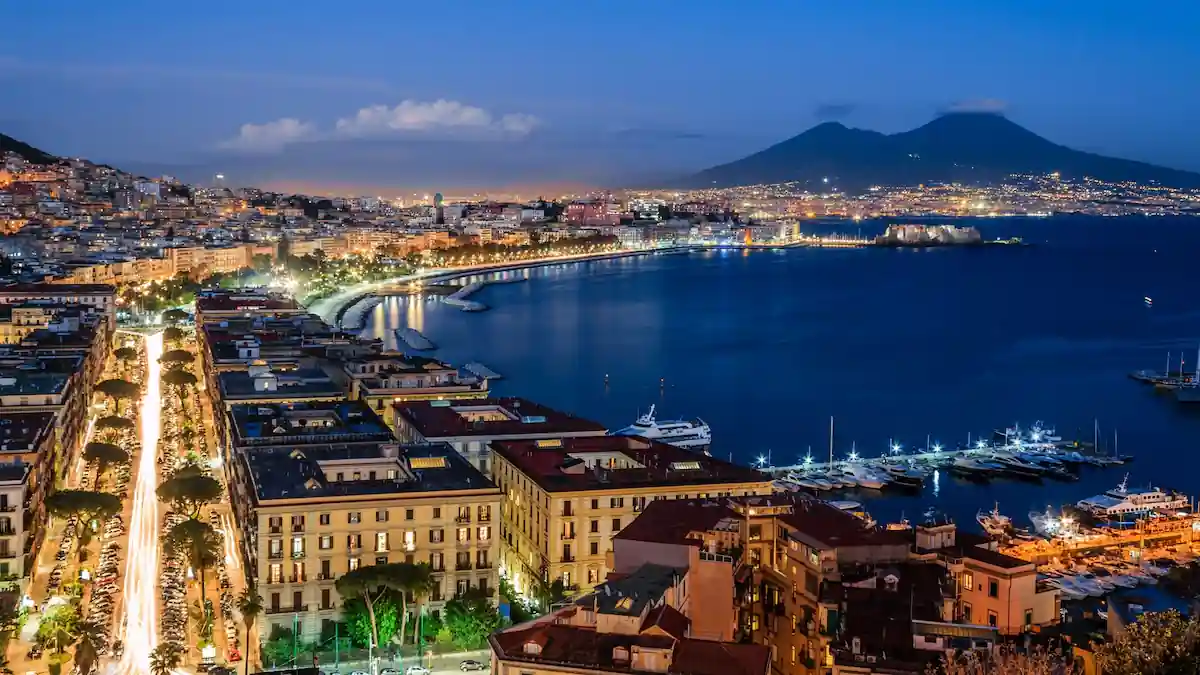
Naples isn’t just pizza and chaos — it’s one of the most fascinating present-day cities layered over ancient wonders. Founded as Neapolis, it was a vital hub of Latin cities before becoming part of the Roman Empire. The result? A vibrant mix of ruins beneath modern streets.
Naples is one of the rare historic cities where you can walk over a Roman theater in the morning, then sip espresso in a bustling piazza above it. Its continuous habitation and preserved sites make it one of the most authentic urban time capsules in Europe.
What to see now
- Napoli Sotterranea tours through underground aqueducts and ruins
- The National Archaeological Museum, one of the world’s best for Roman artifacts
- Subterranean streets following the original grid of ancient Roman cities in Italy map
- Piazzas filled with modern culture, music, and food
Naples deserves at least two days. Beyond history, it’s also your launchpad to the Amalfi Coast and Mount Vesuvius.
5. Taranto / Taras (Puglia) — Spartan Colony on the Ionian Sea
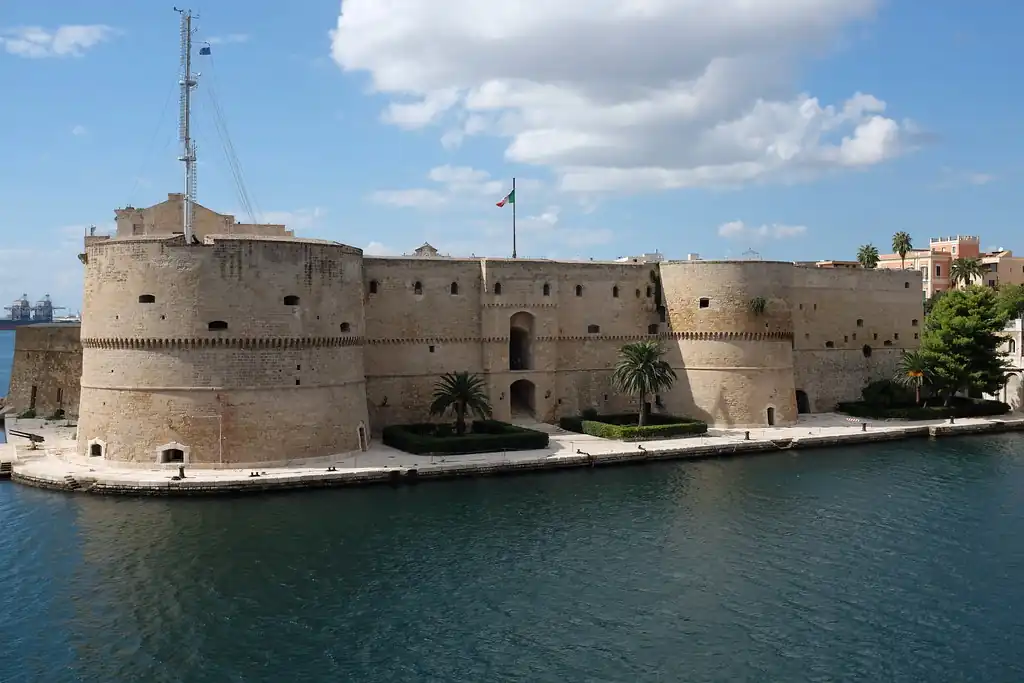
Founded by Spartans in the 8th century BCE, Taranto (ancient Taras) was one of the wealthiest inhabited cities of Magna Graecia. The city prospered thanks to its coastal trade networks, and even today, its layered history is visible in ruins scattered around the old town.
Taranto was a naval power and left behind both Greek and Roman layers. The highlight is the pair of Doric columns standing proudly by the seafront — all that remains of a once-grand temple.
What to see now
- The National Archaeological Museum (MArTA), showcasing artifacts and Linear B tablets
- Seafront ruins, including the Temple of Poseidon columns
- Views of the Mar Piccolo, a lagoon once central to local life
- A short drive to the Riserva Naturale Orientata Stornara for nature escapes after history walks
Spend at least one night here, ideally combining Taranto with Matera or Lecce for a broader southern Italy itinerary.
6. Crotone / Kroton (Calabria) — Philosophers & Athletes of Magna Graecia
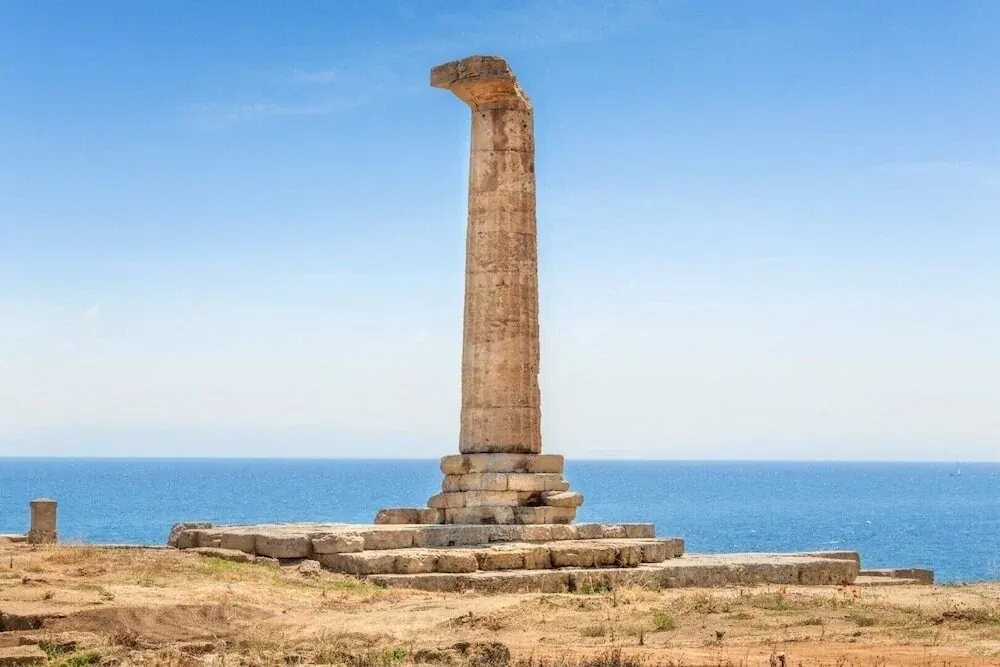
Crotone is less visited but deeply tied to Greek culture and Magna Graecia. Founded by Achaeans around 710 BCE, it was renowned for philosophers like Pythagoras and Olympic athletes who trained here.
Crotone’s coastal position made it a strategic hub, and though much of the ancient city lies in ruins, its sanctuary areas preserve tangible connections to Greece.
What to see now
- Capo Colonna Archaeological Park, featuring remains of temples
- The surviving Greek temples and sanctuaries overlooking the sea
- The local archaeological museum with finds from the coast
- Day trips into Calabria’s rugged coastline for balance between ruins and landscapes
It’s best visited with a car, since sites are spread out. Travelers often combine it with Reggio Calabria for a “deep south” cultural circuit.
7. Reggio Calabria / Rhegion (Calabria) — Toe of the Boot, Ancient Thalassocracy
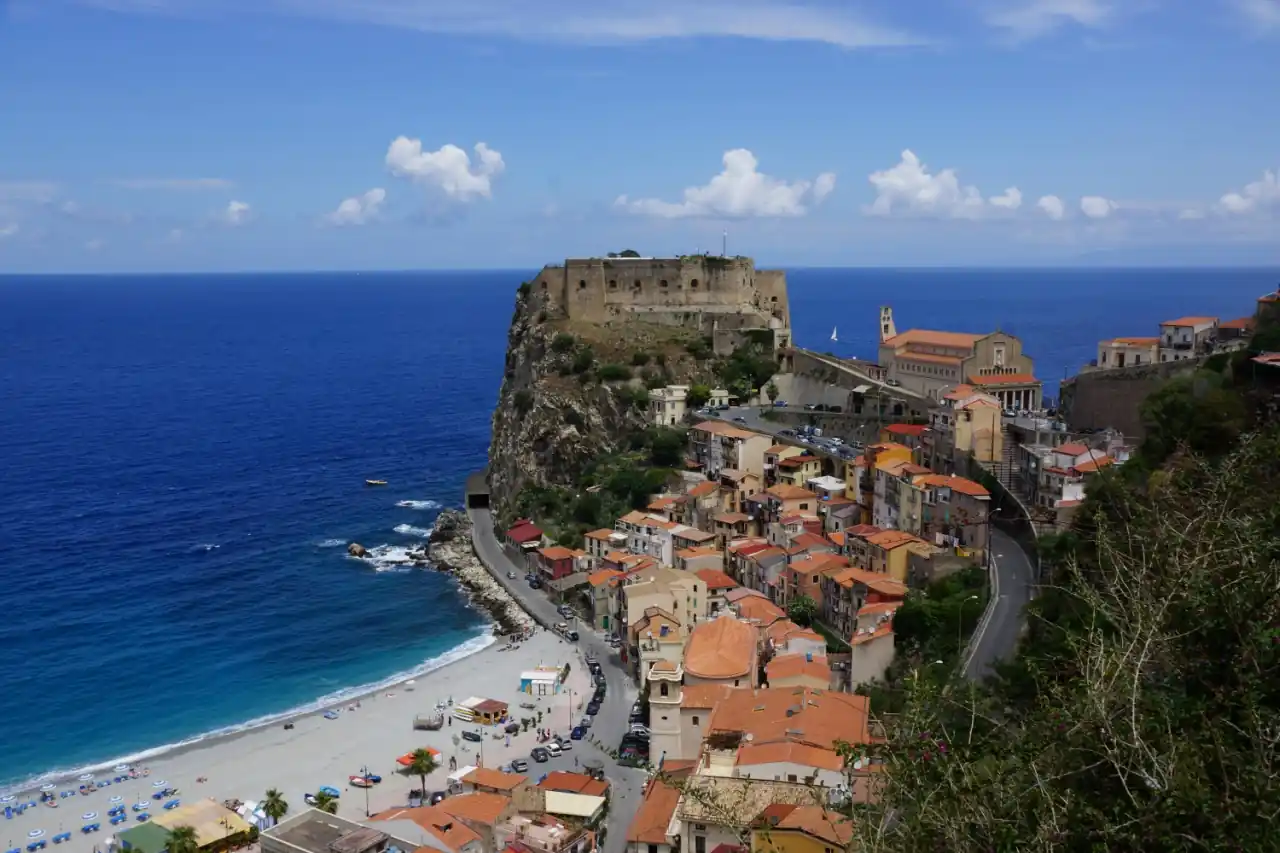
Reggio Calabria, once called Rhegion, was another powerful port city connected to Phoenician maritime legacies and later caught between Byzantine rule and Ottoman rule. Today, it’s both a lively Italian city and a gateway to Sicily.
The city’s treasures include the famous Riace bronzes, two Greek warrior statues considered masterpieces of classical art. Its strategic location also shaped centuries of conflict and resilience.
What to see now
- The Archaeological Museum housing the Riace bronzes
- Ruins of city fortifications, showing shifts across age claims and rulers
- Seafront views that once watched over ancient fleets
- Day trips to Locri or Scilla for smaller coastal heritage towns
Reggio Calabria is a rewarding base for exploring southern Calabria, with ferries connecting you directly to Messina in Sicily.
8. Agrigento / Akragas (Sicily) — City of Temples
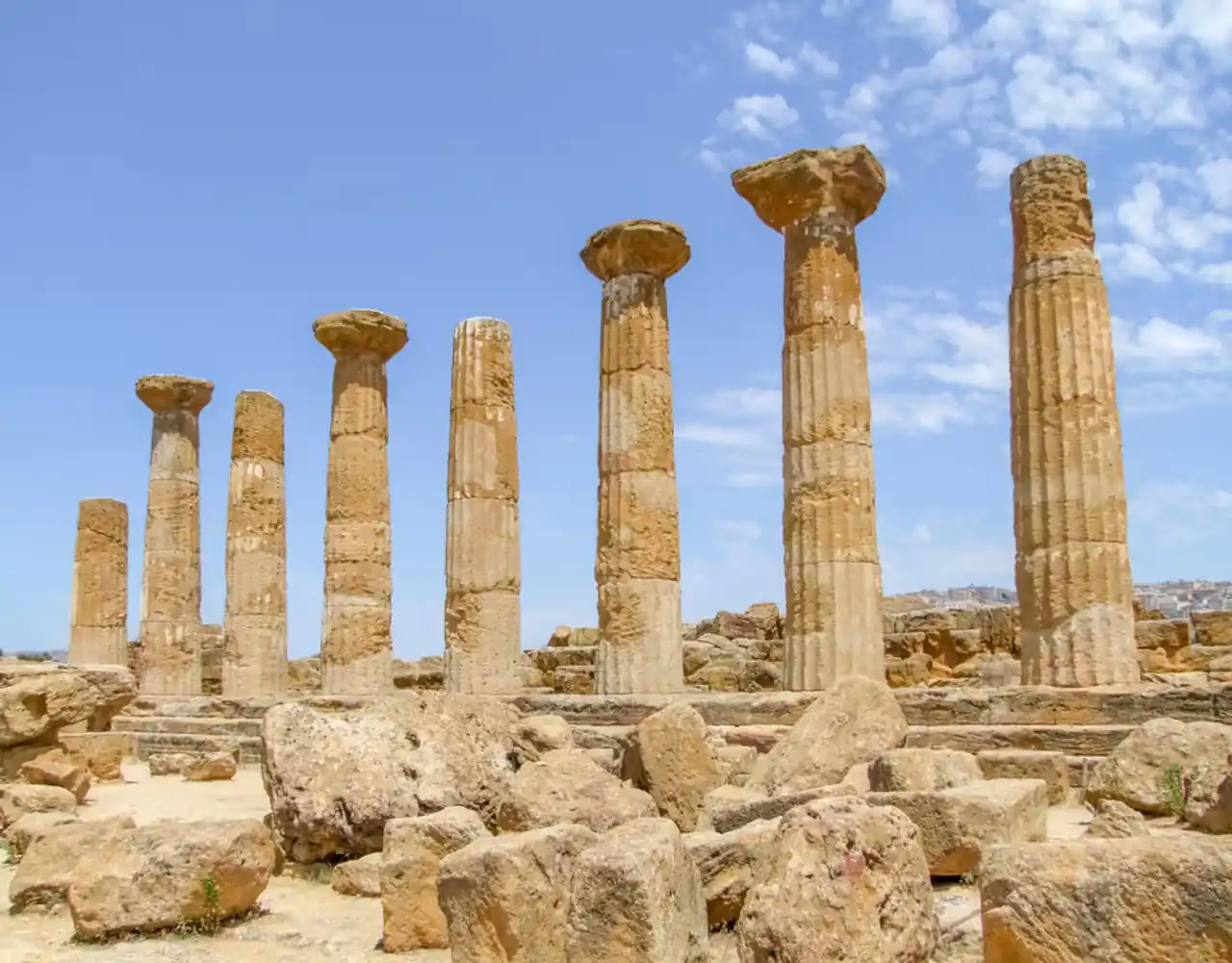
Agrigento, founded as Akragas, was once one of the wealthiest Greek colonies in Sicily. Today, its Valley of the Temples is recognized as a UNESCO World Heritage Site, making it a must-see for travelers curious about ancient grandeur.
The sheer number of ruins here is staggering. Among them is the Temple of Poseidon, one of several massive structures dedicated to the gods. These ruins reveal how strongly the city tied into both Greek myths and religious traditions.
What to see now
- The Valley of the Temples, lined with striking columns and sanctuaries
- Stunning sunset walks that showcase the ruins in golden light
- Pair your visit with nearby coastal towns, where modern culture blends with timeless landscapes
Spend a full day here. Many visitors book guided tours to better understand the temples’ context within the wider story of Sicily.
9. Rome (Lazio) — Legendary 753 BCE & Continuous Urban Life
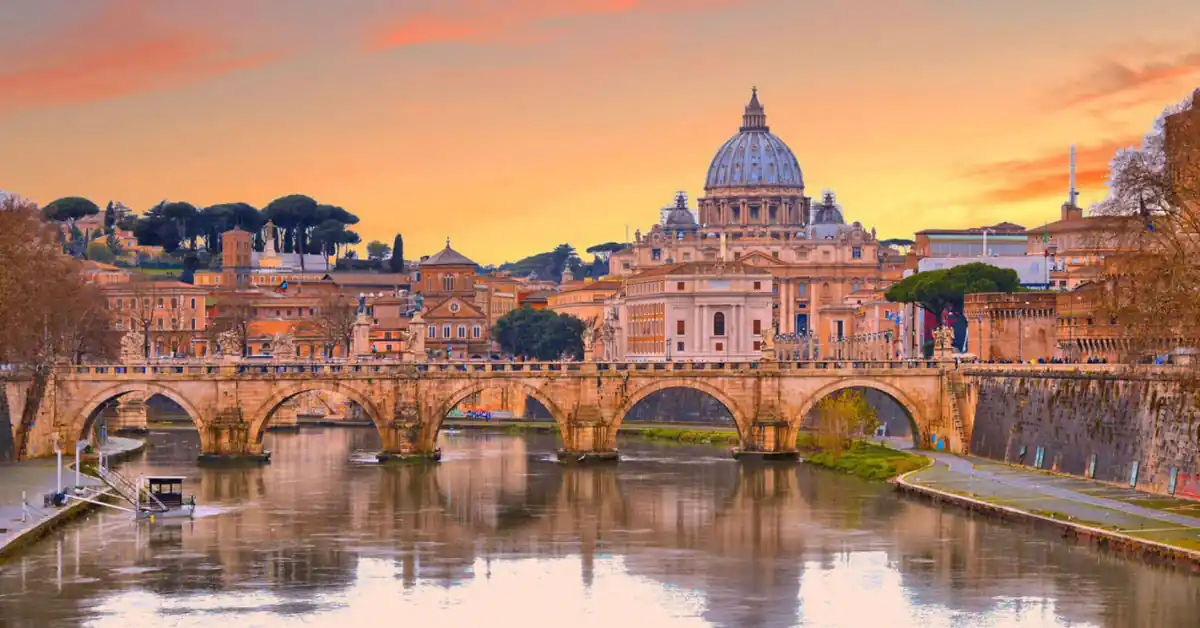
No list of the top 10 oldest cities in Italy is complete without Rome, the capital of the Roman Empire and a place of nearly unmatched influence. Though not the absolute oldest, Rome’s role in shaping Europe and its claim of continuous habitation across centuries makes it essential.
Rome is layered with historic cities beneath its streets — from ancient Roman cities in Italy map fragments to medieval churches, Renaissance palaces, and Neoclassical styles of later rulers.
What to see now
- The Roman Forum and Palatine Hill for early city foundations
- The Colosseum and Appian Way for iconic ruins
- The Vatican Museums for context on art’s progression across time periods
- Piazza complexes where modern culture continues the city’s role as a living capital
Rome deserves at least three days. Pair must-sees with hidden sites like underground basilicas and lesser-known ruins in Trastevere.
10. Mantua / Mantova (Lombardy) — Bronze Age Roots, Renaissance Brilliance
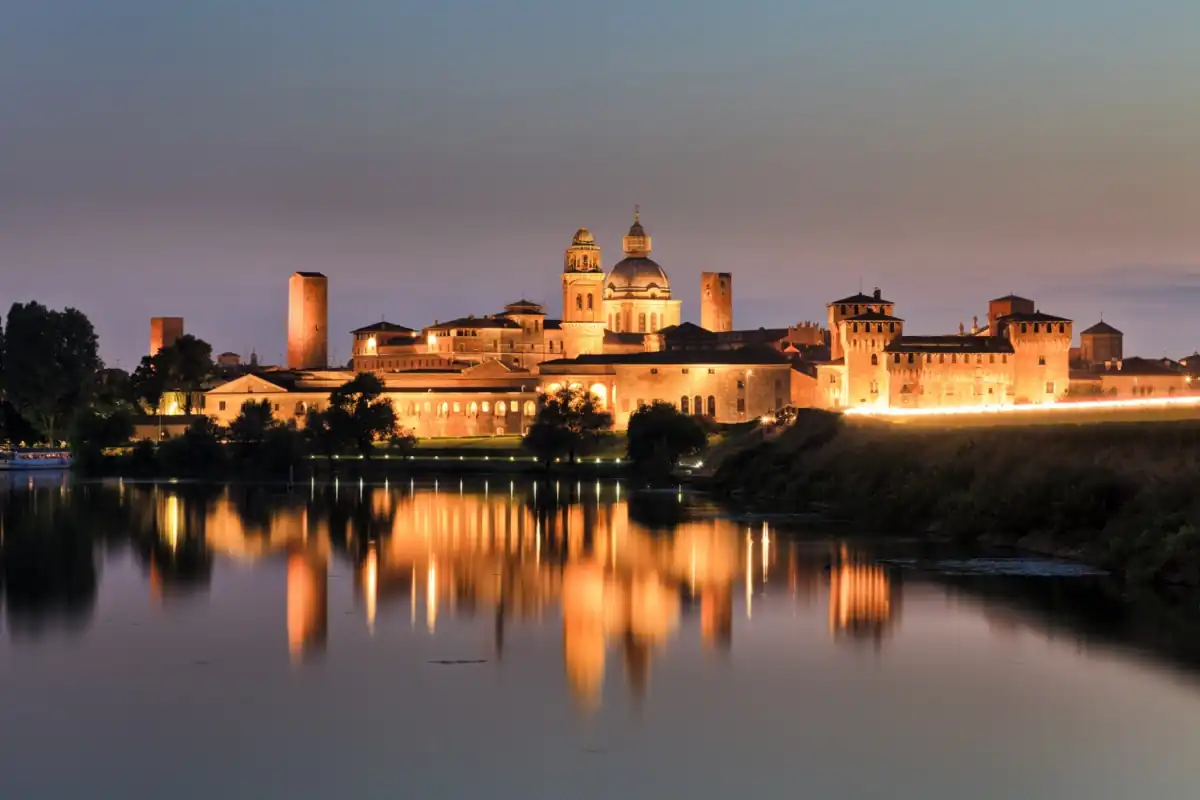
Mantua may surprise some, but archaeological finds show traces of settlements as far back as the Bronze Age. It later flourished under the Gonzaga family, who transformed it into a Renaissance jewel. Today, it’s part of Italy’s network of Historic Cities protected by UNESCO.
While Rome and Agrigento impress with scale, Mantua offers intimacy and artistry. Its Renaissance heritage connects to Claudio Monteverdi, the composer who worked here. The city also endured siege and destruction under German forces, yet it remains beautifully preserved.
What to see now
- The lakeside fortress circuit with towers and ramparts
- The Ducal Palace, home of the Gonzagas, filled with frescoes and treasures
- The Teatro Bibiena, where Mozart once performed
- Strolling the cobbled lanes that blend medieval charm with recent changes in urban renewal
Mantua is best enjoyed at a relaxed pace, ideally overnight, to soak in sunsets by the lakes.
Near-Misses & Alternatives (If You’re Building a Route)
Not every ancient settlement in Italy made the list. Some places, while rich in ruins, lack continuous habitation or don’t function as present-day cities anymore. Still, they’re worth considering if you’re nearby.
- Gela (Sicily): Once a thriving hub of Greek city-states, but now more archaeological site than living city.
- Paestum (Campania): Famous for its preserved temples, including three massive ones, often compared with Angkor Wat in scale and beauty.
- Erice (Sicily): A hilltop town with layers from Minoan settlements through medieval fortifications.
- Tarquinia & Cerveteri (Lazio): Once vibrant Etruscan cities, now better known for necropolises.
- Ostia Antica (Lazio): A well-preserved harbor of Rome, but today it’s a ghost of its former self.
If you have more time, slot these into your route — especially Paestum, where the Greek temples rival anything in Greece itself.
Plan Your Trip — Routes That Minimize Backtracking
Italy’s geography makes it tempting to zigzag, but smarter routes save time and energy. Here are two efficient options:
Southern Magna Graecia Loop (7–10 days):
- Naples → Cumae → Paestum (optional) → Reggio Calabria → Crotone → Taranto → Matera → Syracuse/Agrigento.
This loop traces the heart of Magna Graecia and ties directly to the broader Mediterranean world, much like Egypt’s Luxor Temple Complex and Karnak Temple Complex, or even Turkey’s Hagia Sophia and Grand Bazaar — all threads of connected civilizations.
Central/Northern Arc (5–7 days):
- Rome → Cerveteri/Tarquinia (optional) → Ostia Antica (optional) → Mantua → Florence.
This arc emphasizes Historic Cities, Renaissance brilliance, and places like the Uffizi Gallery and Palazzo Vecchio that link Italy’s past with its artistic heyday.
Both loops are flexible. Add side trips like Polignano a Mare, where the Grotta Palazzese restaurant inside a seaside cave feels like a bonus time capsule.
Practicalities — Passes, Tickets, and When to Go
Traveling Italy’s ancient sites can get expensive, but a few tricks help:
- Passes: Many regions offer combined tickets (e.g., Naples Archaeological Museum + sites nearby). Check city cards for discounts.
- Guided tours: Essential for dense sites like Agrigento or Rome, where layers overlap.
- Timing: Spring and autumn are best. Summer heat, especially in Sicily and southern Calabria, can make exploring ruins draining.
- Photography: Early mornings offer the best light and fewer crowds. In places like Pisa’s Campo dei Miracoli, sunrise shots can frame the Leaning Tower with fewer tourists.
And don’t forget Italy’s festivals. Some Historic Cities, like Florence and Venice, mix ruin visits with cultural events — from concerts in Santa Croce to late-night openings at Santa Maria Novella.
Getting There — Trains, Driving, and Local Transit
Italy’s rail system connects many of the historic cities, but not all. For major hubs like Rome, Naples, and Florence, trains are fast and reliable. Getting to Agrigento, Crotone, or Matera usually requires either long connections or renting a car.
- Trains: Best for Rome, Naples, Mantua, Florence, and Pisa’s Campo dei Miracoli.
- Driving: Essential for Calabria and Puglia. Look out for ZTL (restricted traffic zones) in every Italian city, especially Florence near the Palazzo Vecchio.
- Ferries: From Reggio Calabria to Sicily or coastal links to Amalfi and Capri.
- Flights: If you’re short on time, regional flights to Sicily save days of overland travel.
Parking can be tricky. In Pisa, spaces near the Leaning Tower fill early. In Taranto, head toward the Mar Piccolo side, where lots are cheaper.
1-Day and 2-Day Micro-Itineraries (City by City)
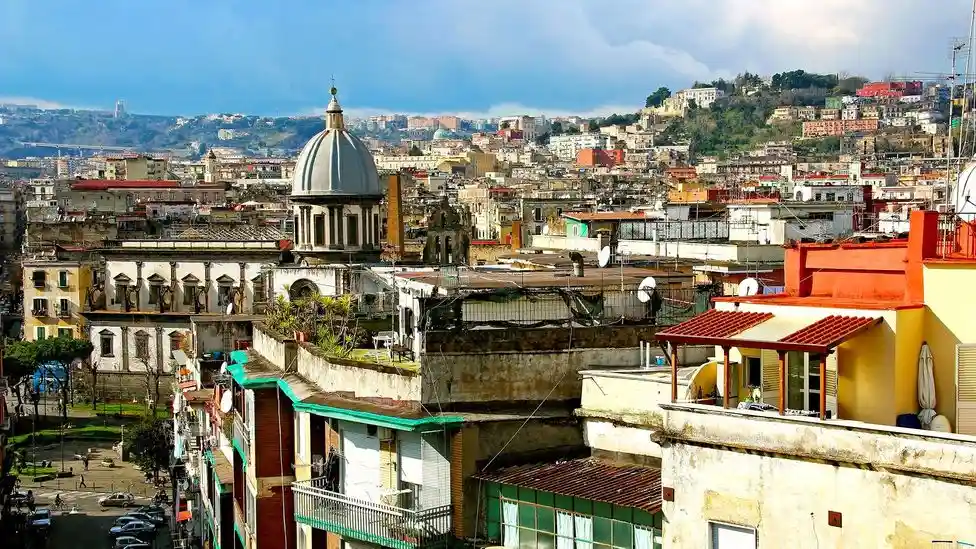
If you’re short on time, here’s how to structure visits:
- Matera:
- 1 day — explore the Casa Grotta, Chiesa San Pietro Caveoso, and cliffside paths.
- 2 days — add hikes through Parco Regionale della Murgia Materana and the MUSMA Contemporary Art Museum.
- Syracuse:
- 1 day — spend the morning in Neapolis Archaeological Park, afternoon in Ortigia.
- 2 days — book a guided tour with local historians, then relax at the seaside.
- Naples:
- 1 day — underground city and Archaeological Museum.
- 2 days — add Pompeii or the Amalfi Coast.
- Taranto:
- 1 day — museum and Temple of Poseidon columns.
- 2 days — day trip to the Riserva Naturale Orientata Stornara.
- Mantua:
- 1 day — Ducal Palace and city walks.
- 2 days — explore frescoed chapels and lakefront parks, while sampling local parmesan cheese dishes.
These blocks help maximize what you see without burning out.
What You’ll Actually See (Field Guide to Ruins)
At first glance, ruins can blur together. Here’s a quick cheat sheet to recognize styles:
- Greek temples: Look for tall, fluted Doric columns and wide bases, like in Agrigento or Paestum.
- Etruscan cities: Known for necropolises and tombs with frescoes.
- Roman theaters: Semi-circular with tiered seating — smaller than amphitheaters like the Colosseum. You’ll find examples in Naples and Catania.
- Byzantine rule layers: Mosaics and domed chapels that contrast with Roman brickwork.
- Ottoman rule traces: Fortifications like the Aragonese Castle in southern Italy.
For comparison, Italy’s ruins often evoke the scale of Angkor Wat or Egypt’s Luxor Temple Complex. But they’re woven into daily life — meaning you can step from an ancient square into a café serving espresso today.
Photography tip: in Pisa’s Campo dei Miracoli, shoot the Leaning Tower at dawn for fewer crowds. In Venice, frame the Basillica di San Marco at sunset to capture its golden mosaics.
Final Thoughts
Exploring the 10 Oldest Cities in Italy isn’t just about ticking names off a list — it’s about stepping into living timelines. From Matera’s caves to Rome’s forums, from Taranto’s seafront temples to Mantua’s Renaissance courts, these journeys combine ruins with daily life.
What makes this list stand out is the criteria: not just age claims, but archaeological excavations, urban layers, and accessibility. Italy’s ruins belong to a global story — like Angkor Wat, Hagia Sophia, or Egypt’s monumental temples — yet they remain uniquely tied to Italian city life, where cafés and piazzas pulse around ancient stones.
As travelers, our role is to enjoy responsibly: respect preservation rules, support local businesses, and embrace the blend of ancient wonders with modern culture. Whether your route takes you south through Magna Graecia or north into Renaissance heartlands, Italy’s history will meet you at every corner.
People Also Ask (FAQs)
1. What defines “oldest” in this list?
It’s a mix of founding date, continuous habitation, and visible ruins. For example, Matera’s caves show life since the Paleolithic era, while Rome built continuously from its legendary founding in 753 BCE.
2. Is Matera truly the oldest city in Italy?
Matera is widely considered among the oldest, with strong historical evidence and cave settlements. In 2019, it was named a European Capital of Culture, spotlighting how ancient and modern layers coexist.
3. Which city has the most impressive Greek ruins?
Agrigento’s Valley of the Temples is the standout. It’s a UNESCO World Heritage and often compared with Cambodia’s Angkor Wat for scale. Syracuse also boasts temples and an Ancient Roman Theatre.
4. Can I do this by train only?
Mostly. Trains connect Rome, Naples, Pisa, and Florence. To reach Taranto or Crotone, though, you’ll need a car. That said, routes are improving with recent changes in infrastructure.
5. Are these sites stroller or wheelchair friendly?
Some, yes — like parts of the Campo dei Miracoli in Pisa or Rome’s Forum (with ramps). But rugged sites like Matera’s cave paths and Cumae’s acropolis require careful steps.
6. Which tickets should I book in advance?
Definitely book the Vatican Museums, the Colosseum, and Florence’s Uffizi Gallery online. In Venice, entrance to the Basillica di San Marco and sites around it also benefit from pre-booking.
7. Which city is best for combining history with beaches?
Try Taranto, where ruins sit near the Mar Piccolo and Ionian beaches. Or pair Agrigento’s temples with seaside stays on Sicily. Travelers often consult guides like the Positano Travel Guide for add-ons along the Amalfi Coast.
8. What about food culture in these historic cities?
Italy’s ancient towns double as food havens. Mantua is famous for pumpkin tortelli, while Parma (not on the list but nearby) is tied to parmesan cheese. Local markets also reflect trade legacies going back to Phoenician maritime legacies.
9. Any unique museums beyond ruins?
Yes — Matera’s MUSMA Contemporary Art Museum inside caves, and Mantua’s Ducal Palace galleries. Bologna, home to the university of Bologna, adds another layer: medieval academic culture alongside Roman roots.
10. Who is Gaia Mieren?
Gaia Mieren is a travel writer often referenced in Italian tourism circles for her research on Historic Cities and cultural storytelling. Her work emphasizes connecting ruins with modern culture experiences.
Recent Posts
 20 Surreal Places in Mexico That Feel Too Dreamy to Be Real (2025)
20 Surreal Places in Mexico That Feel Too Dreamy to Be Real (2025) What Makes Santiago Ways the Most Trusted Camino Agency?
What Makes Santiago Ways the Most Trusted Camino Agency? What Makes Orbis Ways the Go-To Choice for Outdoor Travel Enthusiasts?
What Makes Orbis Ways the Go-To Choice for Outdoor Travel Enthusiasts? Holiday Party Planning 101: Why Transportation Should Be at the Top of Your List
Holiday Party Planning 101: Why Transportation Should Be at the Top of Your List A Complete Guide to Veneajelu – Types, Routes, Prices, & More
A Complete Guide to Veneajelu – Types, Routes, Prices, & More

